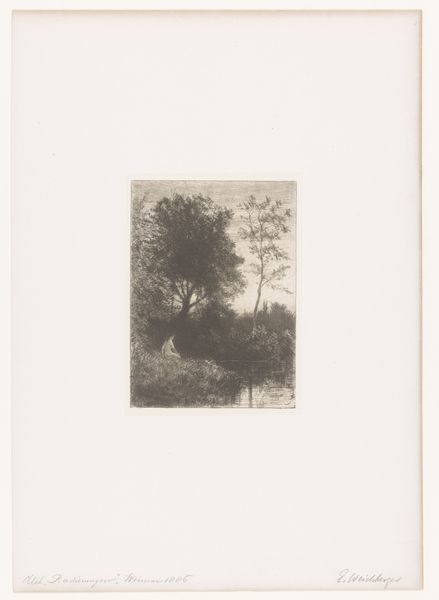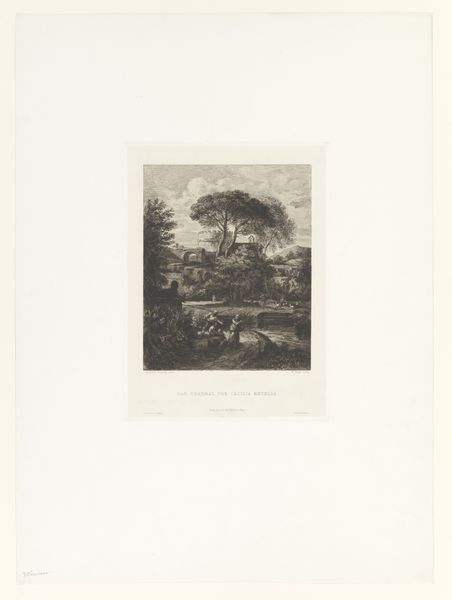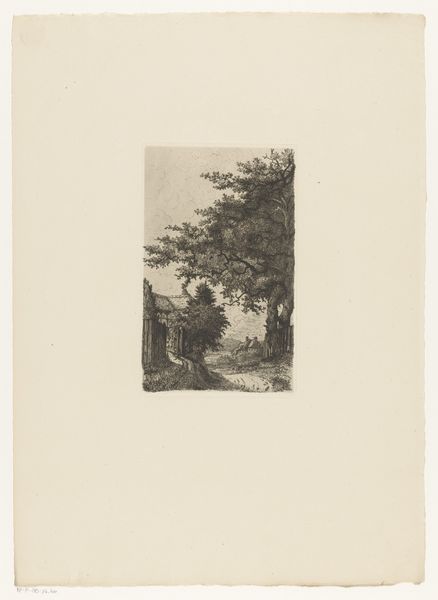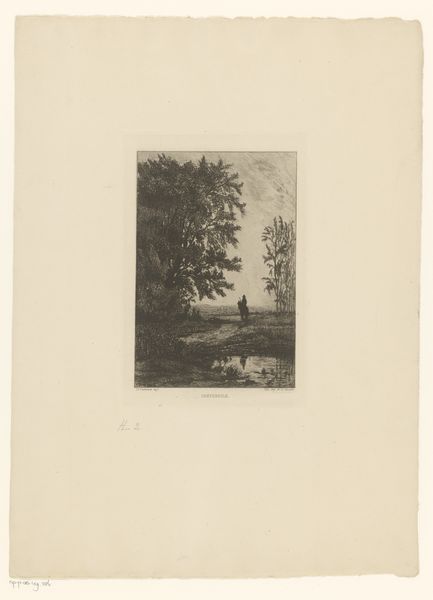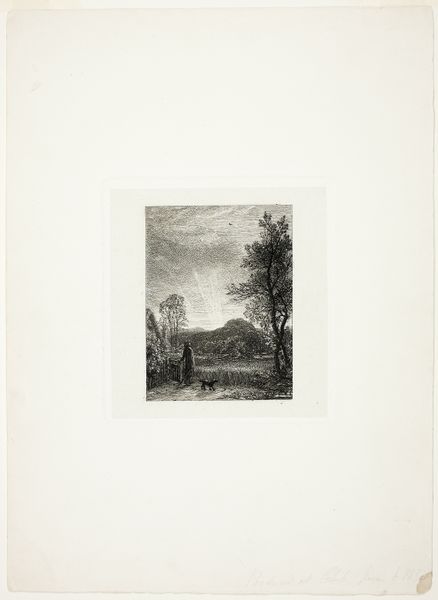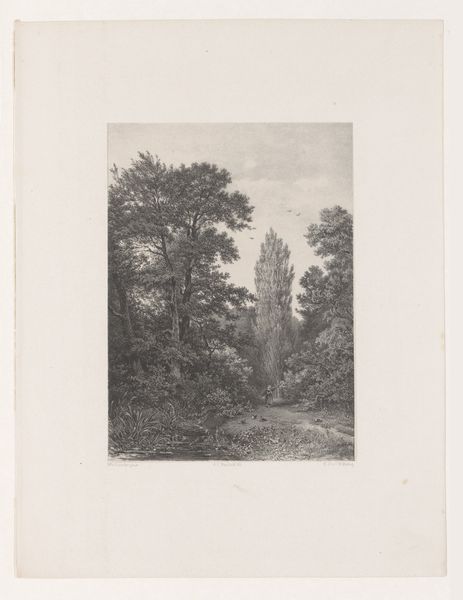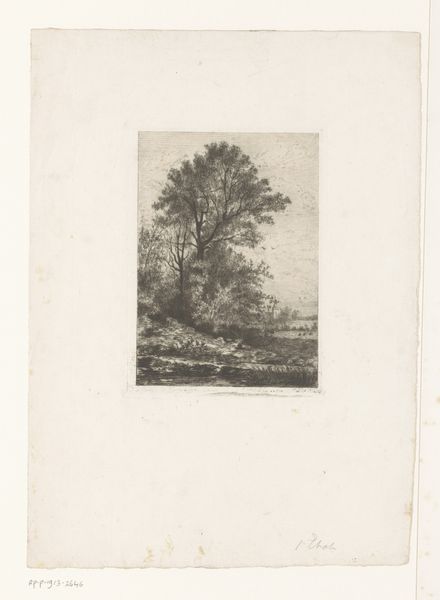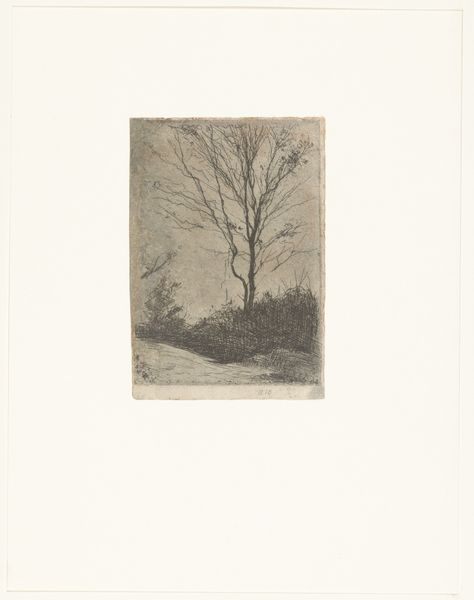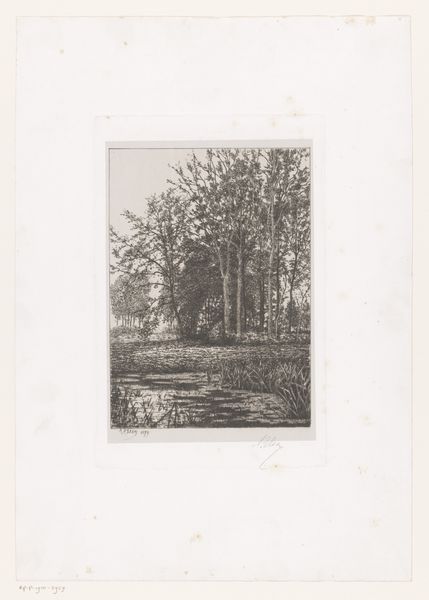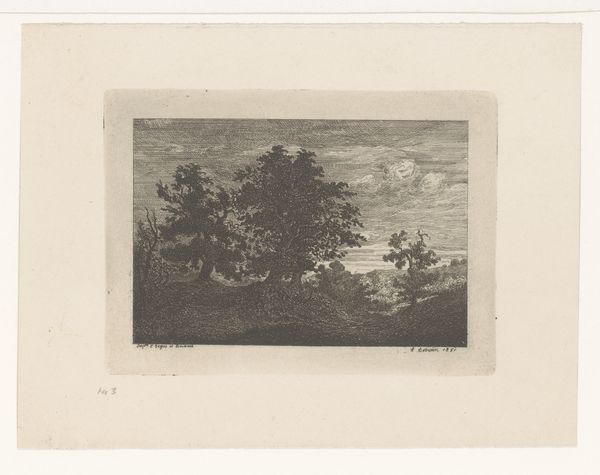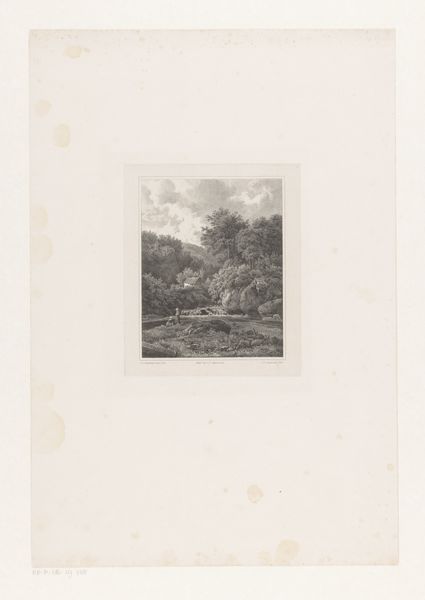
Dimensions: height 220 mm, width 139 mm
Copyright: Rijks Museum: Open Domain
Curator: Up next we have "Twee bomen aan het water," which translates to "Two Trees on the Water," an etching dating from between 1860 and 1910. Editor: My first thought is that this is exquisitely delicate, a study in light and shade. The composition, primarily in grayscale, creates a very atmospheric, tranquil effect. Curator: Absolutely, and situated as it is in the late Romantic period, the work participates in a longer discourse about our place in the natural world. This little print exemplifies the Romantics' embrace of nature and emotion in the face of rapid industrialization. It also echoes the back-to-the-land movements of the period. Editor: Look at the way the artist has rendered the sky. It's all in these incredibly fine lines, cross-hatching of the print-maker. How this creates an impression of immense space and air moving. I see the hand of the artist constantly reminding the viewer this is also an etching made on paper. Curator: Consider too that while nature seems ever present, it’s being rendered as a construct—a mediated experience filtered through an artist's specific vision, class position, and, crucially, gender. Editor: That emphasis on the human act of mediation is key to the experience. And look at the balance here. Vertical thrust of the trees opposed by the horizontal band of the water. This is anything but a direct unmediated transcription. Curator: By focusing on seemingly untouched landscapes, artists from the period often romanticized and conveniently omitted any messy elements tied to contemporary agriculture, extraction, or industrial progress. This etching may appear politically neutral but speaks volumes about what's being omitted from the frame. Editor: Those kinds of choices, conscious or unconscious, determine the finished product we're scrutinizing here and ultimately allow us to consider all sorts of meanings and impressions in addition to the beautiful image itself. It's that conversation with the artist's work that enriches us, I believe. Curator: Yes, perhaps it is in the space between those two trees where meaningful interrogation can start.
Comments
No comments
Be the first to comment and join the conversation on the ultimate creative platform.
